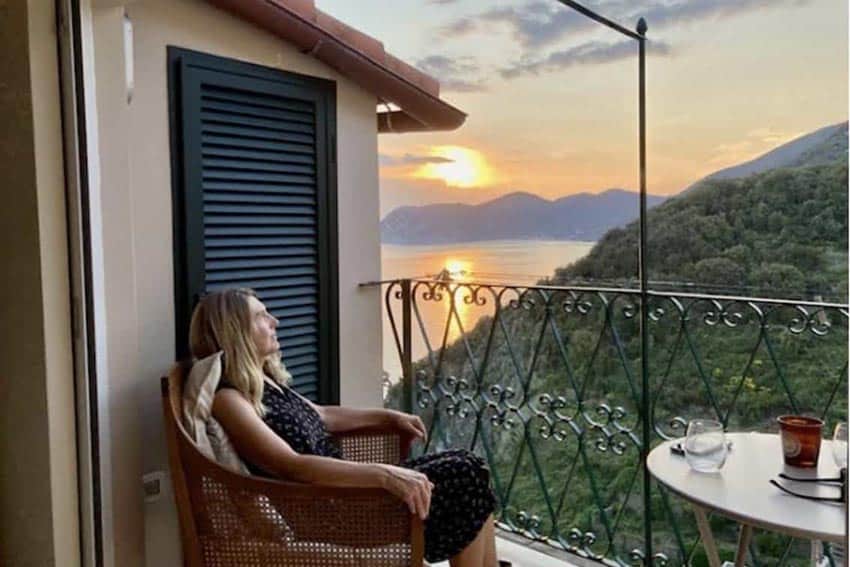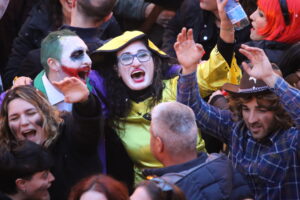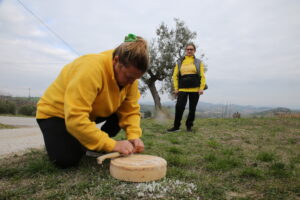An undiscovered region rich in cultural depth and beauty
By R. Daniel Foster

High on the definitive “undiscovered Italy” list is the Etruscan city of Tarquinia, dotted with scores of medieval towers and turrets just beyond the Mediterranean.
Tarquinia is the Italy you may have remembered from 30 years ago – or it’s the Italy you’ve longed to finally see: unspoiled and authentic. You’ll find few tourists here where the culture is so rich and varied that it may have frightened away the Piazza Navona set back in Rome.
Tarquinia is north of Rome in the Viterbo province, about an hour-and-three-quarters by train. The drive is slightly less, except on crushed summer weekends when Romans take their holiday here along six miles of beaches strung with restaurants, bars, and walkways.
Some visit Tarquinia as a day or overnight trip from a home base in Rome. Better though, to spend four or five days here. There are worthy day trips from Tarquinia itself – to some of the grandest Mannerist villas in all of Europe.
Tarquinia, known as Corneto until the 19th century, originally stood in antiquity on the Civita Hill, just north of the current city, yet rich in medieval architecture. Massive limestone blocks dating to the 4th century B.C. can still be viewed at Civita.
Painted tombs of Transcendent Pleasure
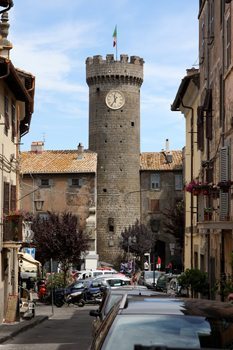
Tarquinia’s main draw: painted Etruscan tombs that date to the seventh century B.C. containing vivid scenes of hunting, feasting, dancing, orgies and even flogging. The combination of sex, death and spirituality was a tried and true triad for the Etruscans, a mixed race of Middle Eastern origins.
Only 200 known Etruscan tombs with painted frescos exist, and Tarquinia has the lion’s share – 140. The Tarquinia necropolis, also termed Monterozzi, includes the Tomb of the Leopards, Tomb of the Bulls and Tomb of Flogging.
The necropolis is a rare and fascinating glimpse into ancient death and magic rituals. Painted in rich hues of blood red, ochre and cobalt, many of the frescos are surprisingly intact – now sealed behind glass, and accessible by deep cut stairways beneath the burial mounds. Press a button near the viewing window and they light up.
Free sex, Etruscan style
If you visit the necropolis, take time for preparatory research on the Etruscan civilization overall, and specifically its death rituals and libidinous lifestyle that make the free sex 1960s seem as tight as a Victorian corset. Etruscan sexuality, so rooted to death and the afterlife, was not, as modern minds might believe – base.
Historical records indicate that familial continuity was emphasized and researchers cite the “vulnerability, initiation and heroic status” tied to nudity and sexuality.
Death in the Etruscan culture was never so alluring – or celebrated in such a triumphal manner. And the very best place to view it is a few dozen feet below the earth – at Tarquinia’s necropolis. Your best introductory research comes via D.H. Lawrence’s 1932 Etruscan Places, which describes the tombs in evocative detail and with penetrating insight.
An Etruscan masterpiece
Tarquinia’s archeological riches are housed at the National Museum, housed in the Vitelleschi Palace – the standout of which is a pair of winged earthenware horses that once decorated the pediment of Ara della Regina (Altar of the Queen), 4th century B.C. Cavalli Alati is remarkable for its detail, pieced together from more than 100 shards when first found by archeologist Pietro Romanelli in 1938.
Originally painted crimson, brown and cream, the relief statue is one of numerous pieces that wreathed the temple. One can only wonder what other improbably carved masterworks were placed there.Cavalli Alati is one of the world’s Etruscan masterpieces. The piece embodies such beauty and grace that it’s hard to tear your glance away.
The double horse once pulled a chariot, which was never recovered, and was thought to carry the god of the temple.
The Borgia’s filmed here

Santa Maria di Castello (1121–1208) is among the oldest churches in Tarquinia – and a recent filming site for the Borgias Showtime series starring Jeremy Irons as Pope Alexander VI. “They shut that part of town down for four or five days,” explained tour guide Valentina Poggiani, “and covered the walkway with lots of sand.”
The building is no longer used as a church but is rented out for weddings. There’s usually a trail of rose petals leading from the steps to the altar, along with wilting bouquets – left after the weekend weddings have departed. The Romanesque architecture has hints of Arabic detailing – and includes a polygonal baptismal font.
The church is near Tarquinia’s old town with its stone streets, towers and ancient buildings, including the church of San Martino (1050), and the Palazzo Vitelleschi (1490) that houses the National Museum. Piazza Titter Marini is also nearby, named for the town’s beloved poet who died in 1980.
Being unspoiled, Tarquinia offers up unexpected surprises: a feast day parade to San Giovanni that half the town joins, a spontaneous soccer celebration that erupts in the streets after a win with Britain, and a 2,500-year-old mosaic found on a floor near the cash register of l’Ambaradam restaurant in Piazza Matteotti.
The mosaic seems to cry out for museum protection – but there it lies, stepped on and looking actually, in really great shape. But this is Italy, where the populace inhales historical dust with each breath.
A double villa day trip + Italy’s best pizza

An hour or so inland from Tarquinia are two Mannerist villas, among the finest in Europe. Villa Lante and Villa Farnese are about half-hour apart –- so both can be covered in one day. I would suggest visiting Villa Lante in the morning, then a drive to Caprarola, home to Villa Farnese. Before the second villa visit, lunch at 2 Gallozzi Pizzeria in Caprarola, which boasts national, prizewinning pizza.
Owners Patricio (the chef) and Mario (the manager and host) serve up thin flaky crusts lathered with everything from prociutitio, salami, arugula and artichoke hearts.
Among the shop’s prizewinners is this stunner: a four-cheese pizza with creamed mushroom featuring Italy’s famed fontina cheeses.
Don’t neglect the pizzeria’s dessert creation (also a national prizewinner) – chocolate with chunks of chestnuts, hazelnut and walnuts perched on the restaurant’s delectable wood-fired dough. It’s like biting into a chocolate cloud. Here’s the shop’s address and phone: 2 Gallozzi Pizzeria. Via Filipe Nicolai, 171, 01032 Caprarola. +39 (0)761 647926
Villa Lante, Gardens of Surprise
Just up the hill from the town of Bagnaia lies Villa Lante, attributed to Jacopo Barozzi da Vignola. The property contains two houses designed for Cardinal Gianfrancesco Gambara, but the real draw is the infinite gardens and fountains.
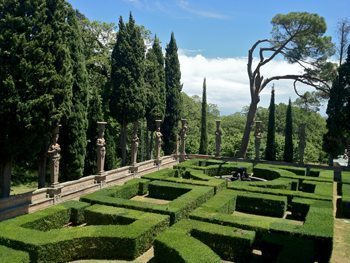
Strict symmetry prevails amid the grounds. This, after all, is early 1500s Mannerist territory where restrained naturalism and intellectual innovation reign.
A semi-circular Pegasus fountain banked by towering semi-naked busts greets you near the entrance. The presentation is over-the-top – and were it not for a 500-year-old patina, this waterworks (along with others in the garden), could well fit at the base of New York City’s Trump Tower.
Tight boxwood hedges spread in snake-like formation at the base of the main grounds. Winding your way through taller boxwoods, you exit to behold a long trough fountain banked at the far end by two immense river gods.
This is the first of several of the garden’s Baroque surprises, designed to evoke sudden delight and amazement just when you least expect it. A one-toothed grotesque at the fountain’s near edge seems to take the edge off that emotion – lest one’s astonishment get out of hand.

But wait, there’s more. Well, there’s always more when teetering on the edge of the High Renaissance.
Further up spouts the circular Fontana die Lumini, or Fountain of the Lamps with its faux Roman oil lamps that, shot through with sunlight, seem to blaze with fire.
Further on, an extended, descending channel fountain leads to a third terrace that harbors the Houses of the Muses. Between them is the Fountain of the Deluge (it’s not as awe-inspiring as the name may suggest). This final fountain consists of three moss and vine covered grottos. Perhaps it’s a placid ending, but no doubt also exactly what was needed.
Villa Farnese, one of the finest examples of Renaissance architecture
This Mannerist villa commissioned by Cardinal Alessandro Farnese and executed by Giaconda Barozzi da Vignola, contains five floors, each with separate functions.
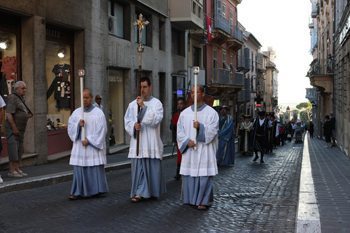
Among the highlights are the Scala Regia or Royal Stairs that rise amid the floors awash in brilliant frescos. The Room of the World Map is also notable, depicting the world circa 1574. Look to the ceiling to celestial spheres and constellations.
The gardens, much like at Villa Lante, are grand and far-reaching. River gods prevail here as well, along with more grotesques. At the far end of the complex sits the box-like hunting lodge wreathed by towering statues of demi-gods, all decked in nature-inspired attire and topped by large urns.
Pietro Bernini, the father of Gian Lorenzo Bernini, designed the sentinel-like statues that command the perimeter of this square, stately garden, tight with more boxwood hedges.
Behind the hunting lodge stretches yet another football field worth of gardens and fountains. But why venture there when perfect serenity is found amid Bernini’s elegant moss-stained statues?
The garden was, yes, inflated – overdone with the usual self-consciousness that comes with being so exacting. Yet among the gardens at both Villas Lante and Farnese, it was my favorite. I wanted to spend whole afternoons beneath Bernini’s courtly statues.
Nearby is this plaque, written in Italian. While a bit haughty, when one lords over such gardens, one is allowed:
Whoever enters here: what seems horrid to you is pleasant to me. If you like it, stay, if it bores you, go away; both are equally pleasing to me.

R. Daniel Foster is an award-winning filmmaker, documentarian, and writer whose essays and articles are regularly published in the Los Angeles Times. He specializes in world culture and image. www.rdanielfoster.com
- Saudi Arabia Might Be Your Next Getaway Spot - April 23, 2024
- Mongolia, the Land of Eternal Blue Sky - April 20, 2024
- These 9 U.S. National Parks Require Reservations in 2024 - April 17, 2024



